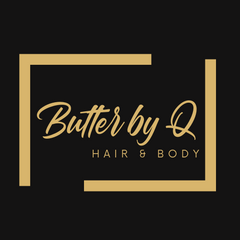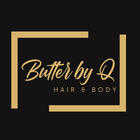Help! What's the Best Moisturizer for High vs Low Porosity Hair?

Are your curls Type 4 or Type 3? If you’re a Type 4, do you have 4a, 4b, 4c, or a mix? While your curl pattern is nice to know, the porosity of your hair is even more important.
When you understand your hair porosity and curl pattern, you’ll be better equipped to moisturize it and promote healthy growth. Let’s take a closer look at hair porosity and a few bonus tips for moisturizing your high porosity hair or low porosity hair.
And don’t forget to shop our Collection of Hair & Beard Products made with 100% natural, plant-based ingredients.
What Is Hair Porosity?
Hair porosity (porousness) explains how well moisture and oils pass in and out of the cuticle, which is the outermost layer of your hair. For the most part, your hair porosity is genetic. However, hair porosity can also be impacted by external and environmental factors, such as:
- Chemical processing
- Heat treatments
- Exposure to the sun
Understanding your hair porosity is paramount to selecting the best products to keep your Type 3 or Type 4 hair shiny, strong, supple, and moisturized.
High Porosity Hair vs Low Porosity Hair vs Medium Porosity Hair

Your hair porosity is determined by how closed or open the shingle-like cuticles are. Porosity is simply a measure of how easily moisture can penetrate and leave your hair shaft.
How the cuticle layers (think of shingles) sit on the hair shaft contributes greatly to its porosity. In general, there are three different types of porosity or porosity levels:
- High Porosity Hair
- Medium Porosity Hair
- Low Porosity Hair
What Is High Porosity Hair?

With high porosity hair or very porous hair, your cuticles are raised, which allows moisture to effortlessly pass out and into your hair shaft. High porosity hair can be genetic or be caused by cuticle damage from chemicals, environmental damage, manipulation, or excessive heat styling.
High Porosity Hair Is Prone to Tangling and Frizz
High porosity hair is often prone to tangling, shrinkage, and frizz, especially in humid weather. With high porosity hair, performing simple functions like shampooing, swimming, and bathing can lead to increased damage and breakage because of the massive amount of water high porosity hair will absorb.
While absorbing moisture is good for your hair, high porosity hair has relatively large gaps and holes in the cuticles that also allow moisture and oils to leave almost as fast as it was absorbed.
Make Sure to Use Leave-in Conditioners with High Porosity Hair
Because high porosity hair easily loses moisture, it’s imperative to utilize sealers, moisturizers, and leave-in conditioners. Properly layering leave-in conditioners, moisturizers, and sealers can improve your hair’s ability to retain the moisture you’re giving it. It’s best to follow this regimen with heavy whipped shea butter to protect your hair from losing moisture. The thick butter works to fill in the gaps of your damaged cuticles.
What Is Low Porosity Hair?

On the opposite end of the spectrum is low porosity hair. Low porosity hair features tightly bound overlapping cuticles that lay flat on each other. Because there is little to no spacing between cuticles, it's very difficult for moisturizing products, oils, and conditioners to transfer and maintain moisture on the hair shaft.
This type of hair can be described as resistant to moisture because the tightly bound structure can repel moisture. Low porosity hair is harder to keep hydrated but tends to be very shiny.
Avoid Heavier Oils for Low Porosity Hair
When it comes to moisturizing low porosity hair, light oils are a major plus! However, heavier oils like coconut oil and olive oils are a major No-No for low porosity hair. These heavier oils tend to settle on top of the hair instead of deeply penetrating the shafts.
Medium Porosity Hair
If you have medium porosity hair, you most likely enjoy the best of both worlds. This type of luscious mane usually will require the lowest level of maintenance. Medium porosity hair has overlapping cuticles but still allows just the right amount of moisture in and out of the hair.
Help! Do I Have High or Low Porosity Hair? How Can I Tell?

By now, you’re probably wondering “Do I have high porosity hair vs low porosity hair?” Fortunately, there are multiple ways to determine whether you have high porosity vs low porosity hair. Determining whether you have high porosity vs low porosity hair starts with understanding the key characteristics of each.
How Do I Know I Have High Porosity Hair? Key Characteristics
If you answer yes to any of the following questions, you may have high porosity hair:
- Do moisturizing products, oils, and water quickly absorb into your hair? If so, you most likely have high porosity hair.
- Does your hair tend to be frizzy, dry, and break easily? If so, you most likely have high porosity hair.
- Does your hair quickly air dry? If so, you may have high porosity hair.
How Do I Know I Have Low Porosity Hair? Key Characteristics
Think back to the last time you washed. And if you answer yes to the following questions, you may have low porosity hair:
- How long does it take your hair to dry after washing it? If it takes several hours (up to 24 hours), you most likely have low porosity hair.
- Does it take more than a few seconds for your entire head to be saturated with water? If the answer is yes, you most likely have low porosity hair.
How Do I Know I Have Medium Porosity Hair? Key Characteristics
If you answer yes to the following questions, you may have medium porosity hair:
- Is your hair easy to style and has no problem holding styles for long periods? You may have medium porosity.
- Is your hair shiny and/or glossy? This is a telltale characteristic of medium porosity hair.
- Does your hair take color well? If so, you may have medium porosity hair.
A Simple Test Can Determine Low Porosity Hair vs Medium Porosity Hair vs High Porosity Hair
If you are still unsure if you have high porosity vs low porosity vs medium porosity hair, simply "Take it to the water." There is a very easy water float test you can use to settle the hairy debate.
To get started, wash your hair thoroughly to remove all oils and other substances. This is important because the oil will float on water, which can lead you to believe you have low porosity hair. And this may or may not be the case. Once you've washed your hair:
- Fill a clear glass with water.
- Remove a clean strand of hair and put it in the glass. Make sure to gently lay it on the top of the surface.
- Now, wait three minutes.
What is your hair doing? Here’s what it means:
- If your hair has sunk to the bottom of the glass, you most likely have high porosity hair.
- If the hair is somewhere in the middle of the glass, you have medium porosity.
- If the hair is floating on top of the surface, you have low porosity.
What’s the Best Way to Moisturize High Porosity Hair?

Because your high porosity hair will gain and lose moisture fast, it’s imperative to use thicker hair care products, like shea butter, that can work to seal in moisture. It’s also important to regularly use nutrient-rich pre-poo products, leave-in conditioners, and masks to properly hydrate your thirsty strands.
Doing so can help fight frizz, rebuild strength, and restore shine. Check out Butter by Q's premium whipped shea butter products that are loaded with valuable nutrients for high porosity hair:
Tips for Moisturizing High Porosity Hair
Here are a few simple and easy steps you can use to moisturize your high porosity hair and help drive healthy growth:
- Implement a pre-poo, such as Butter by Q’s Itch-Away Hair Moisturizing Serum
- Find a trusted go-to conditioner that is free of silicones.
- Use a deep conditioner or a masque regularly
- Find a good leave-in conditioner
- Utilize heavier products, such as shea butter, mango butter, and avocado oils to help your hair retain moisture.
- Seal your hair with the right butter and oils to reinforce and seal in moisture.
Why Is Whipped Shea Butter Good for High Porosity Hair?
As one of the heavier kinds of butter, shea butter can work miracles for brittle and damaged hair. Shea butter works with high porosity hair to soften hair and help lock moisture in.
Because shea is a powerful emollient, it also can help repair breakage by strengthening your hair from the root to the tip. Simply put, our proprietary blend of shea butter, mango butter, and premium oils are designed to seal and reinforce the moisture your hair takes in without sending it back out.
What’s the Best Way to Moisturize Low Porosity Hair?
While thick kinds of butter are great for high porosity hair because they help seal moisture, shea can also be used for low porosity hair. However, when using shea butter for low porosity hair, it's important to use it sparingly to avoid product buildup.
According to Bridgette Hill, experienced colorist and trichologist with Paul Labrecque Salon and Skincare Spa, the best oils for low-porosity hair are jojoba, avocado, and shea because they offer large amounts of moisture.
In either case, the key to moisturizing low porosity hair is to use a whipped shea product enhanced by nutrient-rich light oils, such as:
- Jojoba oil for low porosity hair
- Avocado oil for low porosity hair
- Apricot oil for low porosity hair
- Rosehip oil for low porosity hair
- Certain growth-inducing essential oils
Tips for Moisturizing Low Porosity Hair
- Incorporate a pre-poo into your regimen
- Use light heat when conditioning and deep conditioning your hair to force the hair shafts open.
- Use lighter products that can easily penetrate your hair shaft.
- Embrace hot oil treatments to leave your hair revitalized and moisturized
What’s the Best Natural Moisturizer for Natural Hair?

Whether you have high porosity hair, medium porosity hair, or low porosity hair, Butter by Q’s premium whipped butter is tailor-made to help you enjoy healthier hair.
At Butter by Q, we offer three whipped shea and mango butter products that are perfect for high porosity and low porosity natural hair:
- Smooth Operator Whipped Hair & Body Butter
- Mango Passion Whipped Hair & Body Butter
- Honey Flower Bomb Whipped Hair & Body Butter
We have infused them with jojoba oil, rosehip oil, apricot oil, avocado oil, and other key nutrients designed to work around the clock to help your hair retain moisture and drive healthy growth.
Shop Butter by Q Natural Hair Collection and if you have questions, don't hesitate to reach out to us today.

